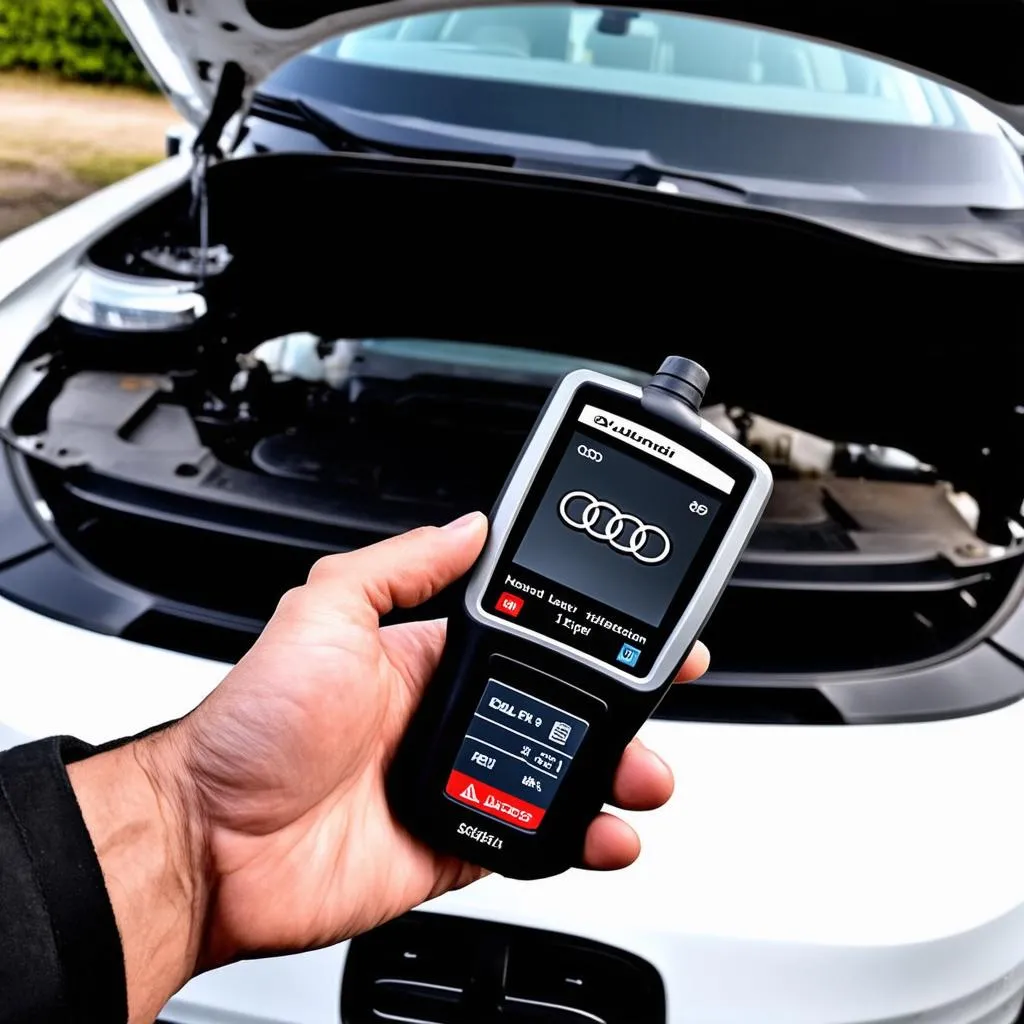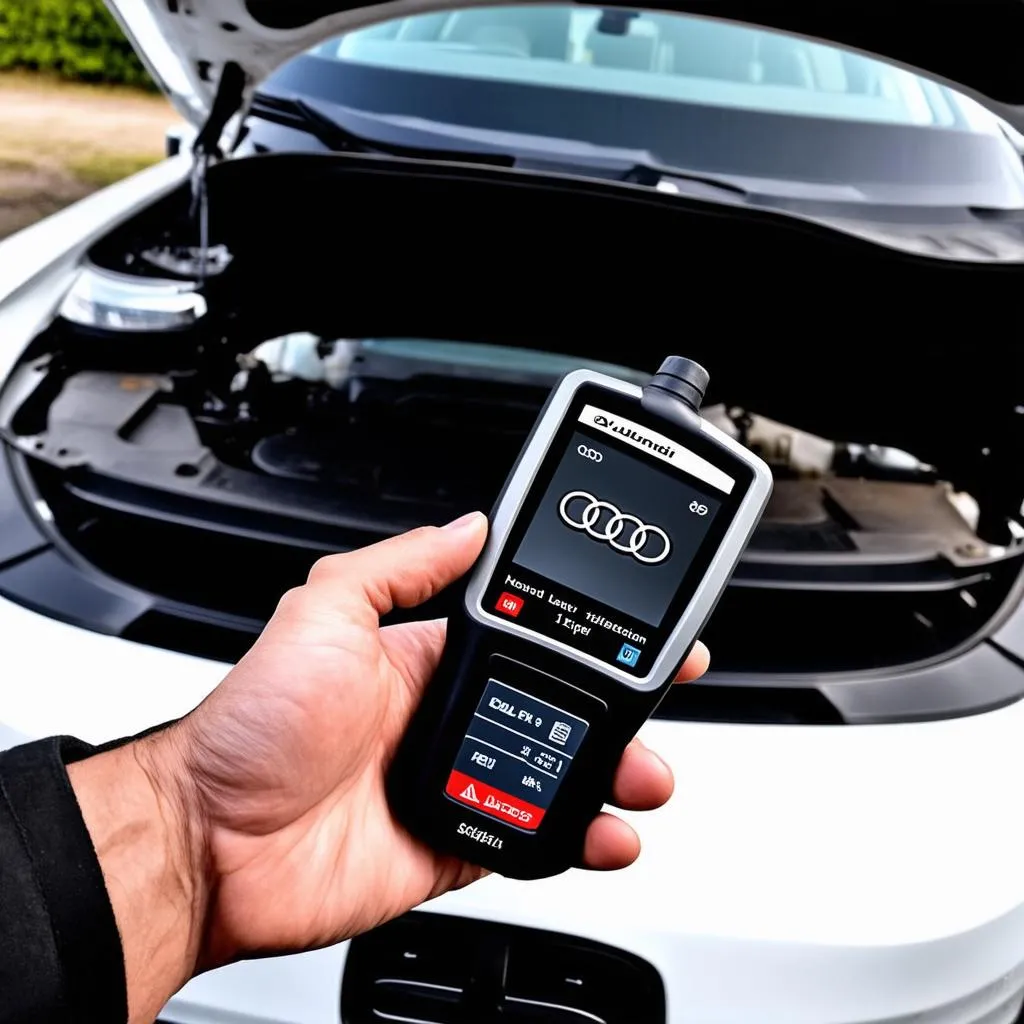Audi VAG Throttle Body Adaptation: A Comprehensive Guide
Have you ever wondered how your car’s engine knows how much air to take in to run smoothly? It’s all thanks to a crucial component called the throttle body, and it needs to be calibrated for optimal performance. This calibration process is known as “throttle body adaptation”, and today, we’re going to dive deep into its world, specifically focusing on Audi and VAG vehicles.
Imagine you’re a car, cruising down the highway, feeling the wind in your metaphorical hair. Suddenly, you need to accelerate to pass another vehicle. Your engine needs to adjust quickly, taking in more air to generate more power. This is where the throttle body comes into play.
What is Throttle Body Adaptation?
The throttle body is a valve that controls the amount of air entering your engine. It’s like the mouth of the engine, deciding how much air to breathe in. Think of it as the gatekeeper of the engine’s oxygen intake.
Throttle body adaptation is the process of adjusting the engine’s control unit (ECU) to ensure the throttle body operates correctly. This is crucial for smooth acceleration, fuel efficiency, and optimal performance.
Why is Throttle Body Adaptation Important?
- Smooth Acceleration: A well-adapted throttle body ensures a seamless transition between idle and acceleration, preventing sudden jolts or hesitations.
- Fuel Efficiency: Proper adaptation allows the engine to run efficiently, minimizing fuel consumption and emissions.
- Optimal Performance: A properly adapted throttle body ensures the engine receives the right amount of air at all times, maximizing performance.
Signs of a Throttle Body Adaptation Issue
- Rough Idle: If the engine struggles to maintain a consistent idle, it could indicate a need for adaptation.
- Stalling: A stalling engine could be due to a poorly adapted throttle body.
- Hesitation During Acceleration: The engine may hesitate or lag during acceleration if the throttle body isn’t correctly adapted.
- Check Engine Light: A check engine light could illuminate due to a throttle body adaptation issue.
Audi VAG Throttle Body Adaptation: A Step-by-Step Guide
Let’s delve into the practical side of things. Here’s how to perform a throttle body adaptation on your Audi or VAG vehicle:
- Connect a Diagnostics Tool: You’ll need a diagnostics tool compatible with Audi and VAG vehicles, like the VCDS (Vag-Com Diagnostic System). This tool will allow you to access the ECU and perform the adaptation process.
- Enter the Adaptation Mode: Navigate through the diagnostic menus to access the throttle body adaptation feature.
- Perform the Adaptation: The process usually involves opening and closing the throttle body while the ECU records the necessary data.
- Save the Adaptation: Once the adaptation process is complete, save the changes to the ECU.
Tip: Always consult your car’s owner’s manual or a trusted mechanic for specific instructions.  audi vag throttle body adaptation guide
audi vag throttle body adaptation guide
Audi VAG Throttle Body Adaptation: Common FAQs
Q: How often should I perform throttle body adaptation?
A: It’s generally recommended to perform throttle body adaptation every 10,000-15,000 miles or when you notice any symptoms of a maladaptation.
Q: Can I do throttle body adaptation myself?
A: While it’s possible, it’s recommended to have it done by a professional mechanic or a qualified individual with experience in diagnostics.
Q: What are some potential consequences of neglecting throttle body adaptation?
A: Ignoring throttle body adaptation can lead to poor fuel economy, decreased performance, engine damage, and increased emissions.
Audi VAG Throttle Body Adaptation: Tips and Tricks
- Use High-Quality Fuel: Using high-quality fuel helps to maintain the cleanliness of the throttle body and prevent build-up.
- Keep Your Air Filter Clean: A dirty air filter can restrict airflow to the engine, leading to adaptation issues.
- Regularly Inspect the Throttle Body: Inspect the throttle body for dirt, debris, or any signs of wear and tear.
Important Note: Some Audi and VAG models have a “learn” function that automatically adapts the throttle body during normal driving conditions. However, it’s always a good idea to perform a manual adaptation to ensure optimal performance.
Audi VAG Throttle Body Adaptation: Further Reading and Resources
- VCDS (Vag-Com Diagnostic System): A powerful diagnostics tool for Audi and VAG vehicles. You can learn more about it on our website: https://cardiagxpert.com/vcds-software-audi/.
- Audi A4 B6 VCDS Codes: This article provides a comprehensive list of VCDS codes for the Audi A4 B6: https://cardiagxpert.com/audi-a4-b6-vcds-codes/.
- Audi A4 VAG-Com: This article offers valuable insights on how to use VAG-Com on an Audi A4: https://cardiagxpert.com/vag-com-audi-a4/.
- 2015 Audi A3 VCDS: Explore the use of VCDS on a 2015 Audi A3 with this informative article: https://cardiagxpert.com/2015-audi-a3-vcds/.
A Final Thought: The throttle body plays a critical role in your Audi or VAG vehicle’s performance. Ensuring proper adaptation through regular maintenance is essential for optimal fuel economy, smooth acceleration, and longevity of your engine.
Need Assistance? If you’re struggling with throttle body adaptation or have any other questions about your Audi or VAG vehicle’s electrical system, our team of experts is here to help. Contact us on WhatsApp: +84767531508 for 24/7 support.
Don’t forget to share this article with your fellow Audi and VAG enthusiasts! And be sure to check out our other articles on car diagnostics and repair at cardiagxpert.com.

